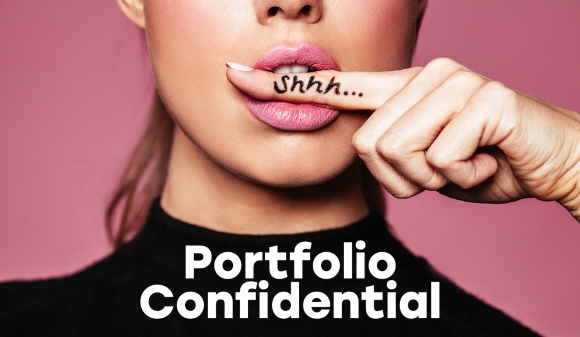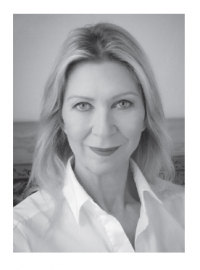Portfolio Confidential

 Real world confidential portfolio discussions:
Real world confidential portfolio discussions:
Q: I am 57, my wife of 31 years is 63. I own a real estate business and my wife is retired. Our assets:
• $504,000 in Class A Kawartha Credit Union shares. I was concerned about the stock market last year and I was told this was a “for sure thing” and has a reasonable return with a five per cent annual dividend.
• $100,000 in cash in my real estate corporation.
• A commercial building worth $800,000 (in a separate corporation) mortgage free that grosses about $90,000 a year. We have $50,000 in that corporate account right now. My wife and I split my wages, I employ her as my secretary and we draw $50,000 each a year from the real estate business.
• Home valued at $275,000 and a mortgage of $125,000.
• Recreational vehicle worth $70,000.
• RRSP in cash $70,000.
• TFSAs in cash totalling $80,000.
I would like to retire in four years. My big question is what to draw when and when to start drawing government pension for my wife. Do I use the Class A shares and wait until I’m 65 to draw government pension? I think we are sitting in a good position but I would love to have a person like yourself guide me to the finish line.
A: The question of ‘what to draw when’ is an important but complex one, and I reached out to tax expert Allen Church, Managing Director of AC Family Wealth Services in Toronto for his advice. But before we hear from Allen, I always see a red flag when someone talks about any investment being “a sure thing”…especially when it represents about 30% of the overall portfolio.
At a high level, I don’t believe in ever having more than five per cent in any one investment security because there is never such a thing as a sure thing. If Lehman Brothers went bankrupt during the financial crisis, so can any company, including Kawartha Credit Union? Additionally, I have other concerns about the Class A shares. The terms of the shares are in plain text, and my comments are in italics.
• There is no guarantee that a dividend will be paid each year. Dividends can be paid in the form of additional Class A Shares, cash, or a combination of shares and cash. Dividends are non-cumulative, therefore, if a dividend is not paid in a given year, it will not be added to the next dividend. As an investor, you normally want all your dividend in cash, not in shares which may be of uncertain value. And the non-cumulative bit is bad, since (see below) these are actually more like interest on a bond rather than real dividends.
• Dividends paid on Class A Investment Shares are deemed to be interest and not dividends and are therefore not eligible for the “dividend tax credit.” For those in the highest tax brackets, the tax rate on real dividends is about 29%, while the tax rate for interest can approach 50%...a big after tax difference! This “five percent dividend” is only about the same as a real three percent dividend from a normal stock.
• Investors may, after a period of five years, request in writing, that the Credit Union redeem their Investment Shares. Redemptions will be restricted in any fiscal year to 10% of the total amount of Investment Shares issued and outstanding at the end of the previous year. Redemptions will be made on a first come, first-served basis and are subject to an administration fee. I am sure these restrictions on liquidity are of little importance in good times…but if something bad were to happen, getting your money out would be very difficult.
• Class A Investment Shares are not deposits, therefore they are not insured or otherwise guaranteed by the Deposit Insurance Corporation of Ontario or any similar public agency. Dividends on these securities are not guaranteed. There is no market through which these securities may be sold. Members purchasing Class A Shares should carefully review the offering statement and any other documents it refers to. Once again, this lack of liquidity should be a real concern.
Advice from Allen Church:
This situation is typical of many business owners in that they have accumulated wealth in several places: one or more family owned corporations, non-registered investments and income producing assets, registered savings plans, and personal real estate.
Before anyone can be “guided to the finish line”, they need to determine what their objectives are. For some, the objective is to leave as much as possible to their heirs subject to providing a minimum lifestyle for themselves. For others, the objective is to maximize their personal cash flow during their lifetime while leaving whatever is left over to their heirs. Neither objective is right or wrong but anyone undertaking retirement or cash flow planning has to pick one.
Once an objective is established, many different factors should be considered including:
• What return are different assets generating and what is the tax cost of realizing a gain on each asset? The higher the return and the higher the tax cost, the higher the barrier to selling the asset. Future value prospects must also be considered.
• Where assets are held in a corporation, there could be tax advantages that should be considered. For example, the corporation may have realized capital gains in the past creating an ability to withdraw funds from the corporation on a tax-free basis using the capital dividend account mechanism. The corporation may also have a balance in its “refundable dividend tax account”. Where such a balance exists, the corporation may be able to recover up to 38% of the amount of any dividends paid to its shareholders. Where the personal tax paid by the shareholder is less than 38%, the family wealth is increased (the corporation recovers more tax than the individual shareholder pays on the dividend).
• Where a lesser value is held in the corporation, estate planning might be simplified by accelerating the withdrawal of funds from a family owned corporation and winding up the corporation before the death of the shareholder. On the other hand, where significant value is held in the corporation, post mortem planning might allow the assets to be withdrawn from the corporation at a significantly lower tax cost after the shareholder passes.
Every situation needs to be evaluated based on its specific facts and the objectives of the individual in question. Generally, I suggest that people estimate what their average annual cash flow requirements are going to be and then we determine how to draw the funds to achieve the lowest average annual tax rate.
When should his wife begin to draw her pension? The answer depends on her expected income before the pension and her expectation about longevity. The CPP pension is assumed to start at age 65, however a pensioner can begin to receive the pension as early as age 60 and as late as age 70. The monthly pension is reduced for each month that one starts to receive the pension before turning 65 and is increased by 0.7% for each month that the start of the pension is deferred past turning 65. There’s no additional benefit to starting the pension after age 70.
The OAS pension can be collected starting at age 65 but it too can be deferred up to age 70. The amount received is increased by 0.6% per month that the start of the pension is deferred past turning 65. An added consideration when determining when to draw OAS is the pensioner’s current and future income. In years where a pensioner’s income exceeds a certain threshold ($77,580 in 2019) a portion of their OAS pension will clawed back. Where one is still working at age 65, deferring the OAS until they have less income may result in a larger monthly payment and avoiding repayment of a portion of the OAS pension.
After considering all of the above, I recommend meeting with a qualified financial planner who can factor all of these variables into a detailed plan designed to meet overall objectives.
Do you have questions about your own investment portfolio? I have recently set up The Rich Thinking® Financial Advice Hotline. This will be a win/win: you get a free 30-minute confidential Zoom chat offering an independent, unbiased perspective on your financial situation with no sales pitch! In exchange, I get to use the anonymized data that will come from these conversations to make my Rich Thinking research even better. Email me to book your Zoom discussion: barbara@barbarastewart.ca

